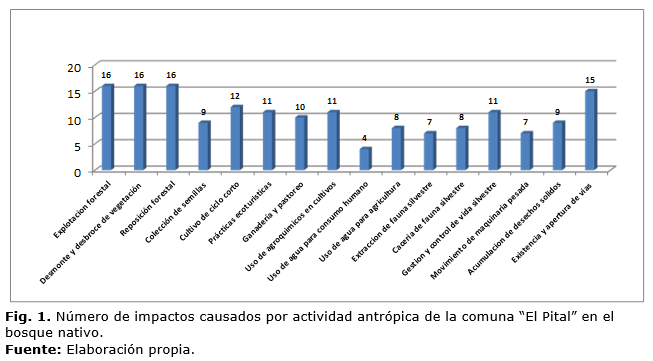Strategies of conservation of the tropical natural forest of the commune «El Pital» Manabí, Ecuador
Main Article Content
Abstract
Downloads
Article Details
References
ANGIOSPERM PHYLOGENY GROUP (APG III). An update of the Angiosperm Phylogeny Group classiûcation for the orders and families of ûowering plants: APG III. Botanical Journal of the Linnean Society, 2009, 161, 105121.
BUROZ, E. Métodos de evaluación de impactos. En: II Curso de Postgrado sobre Evaluación de Impactos Ambientales. La Plata: FLACAM, 1994, p.63.
CANTOS, G. Caracterización estructural y propuesta de restauración del bosque nativo de la comuna El Pital, zona de amortiguamiento del Parque Nacional Machalilla, Ecuador. Tesis de doctorado. Universidad de Pinar del Río Hnos. Saíz Montes de Oca, Pinar del Río, Cuba, 2014.
CANTOS, G. Impactos antrópicos sobre el bosque nativo de la comunidad El Pital, Zona de amortiguamiento del Parque Nacional Machalilla. Tesis de maestría inédita. Universidad de Pinar del Río Hnos. Saíz Montes de Oca, Pinar del Río, Cuba. 2012.
CANTOS, G. Y GARCIA, L. Estudio dendrológico de las principales especies maderables del bosque seco y húmedo del Parque Nacional Machalilla. Tesis de pregrado, Universidad Técnica de Manabí, Ecuador, 1991.
CERÓN, C. E. MONTALVO, C. Estudio botánico para el Plan de Manejo del Parque Nacional Machalilla, Ecuador. Informe Técnico. Proyecto INEFAN/GEF. Quito. 1997.
CLARK, J. L. et.al. Shuaria (Gesneriaceae), an arborescent new genus from the Cordillera del Cóndor and Amazonian Ecuador. Systematic Botany, 2010, 35(3), 662-674.
CONSTITUCIÓN DE LA REPÚBLICA DEL ECUADOR. Capítulo séptimo «derecho a la naturaleza». Artículo 74. 2008.
JORGENSEN, P. M. Y S. LEÓN-YÁNEZ (Eds.). Catalogue of Vascular Plants of Ecuador. Monogr. Syst. Bot. Missouri Bot. Gard. 1999, 75, 1-1181.
LEOPOLD, L.; CLARKE F.; HANSHAW B.; Y BALSLEY J. Un procedimiento de evaluación de impacto ambiental. Servicio Geológico de EE.UU. la Circular 645, Washington, DC. 1979.
MAE-SNAP-GEF. Sistema de monitoreo de la biodiversidad del Parque nacional Machalilla (PNM). Proyecto SNAP-GEF-MINISTERIO DEL AMBIENTE. Versión final. 2007
MURIEL, P. La diversidad de ecosistemas en el Ecuador. En: L. de la Torre, H. Navarrete, P. Muriel M., M. J. Macía & H. Balslev (eds.). Enciclopedia de las Plantas Útiles del Ecuador. Herbario QCA & Herbario AAU. Quito & Aarhus. 2008, p. 2838.
NEILL, D. A. Y C. ULLOA U. Adiciones a la Flora del Ecuador: Segundo Suplemento, 2005-2010. Fundación Jatun Sacha, Quito, Ecuador, 2011.
PALACIOS, W.A. Cuatro especies nuevas de árboles del Ecuador. Caldasia, 2012, 34(1), 75-85.
SIERRA, R. (ed.). Propuesta Preliminar de un Sistema de Clasificación de Vegetación para el Ecuador Continental. Proyecto INEFAN/GEF-BIRF y Eco Ciencia. Quito, Ecuador, 1999.
ULLOA, C., D. NEILL Y O. DUDEK. A new species of Miconia (Melastomataceae, Miconieae) from the Ecuador-Peru border. Phytokeys, 2012, 12, 35-46.


